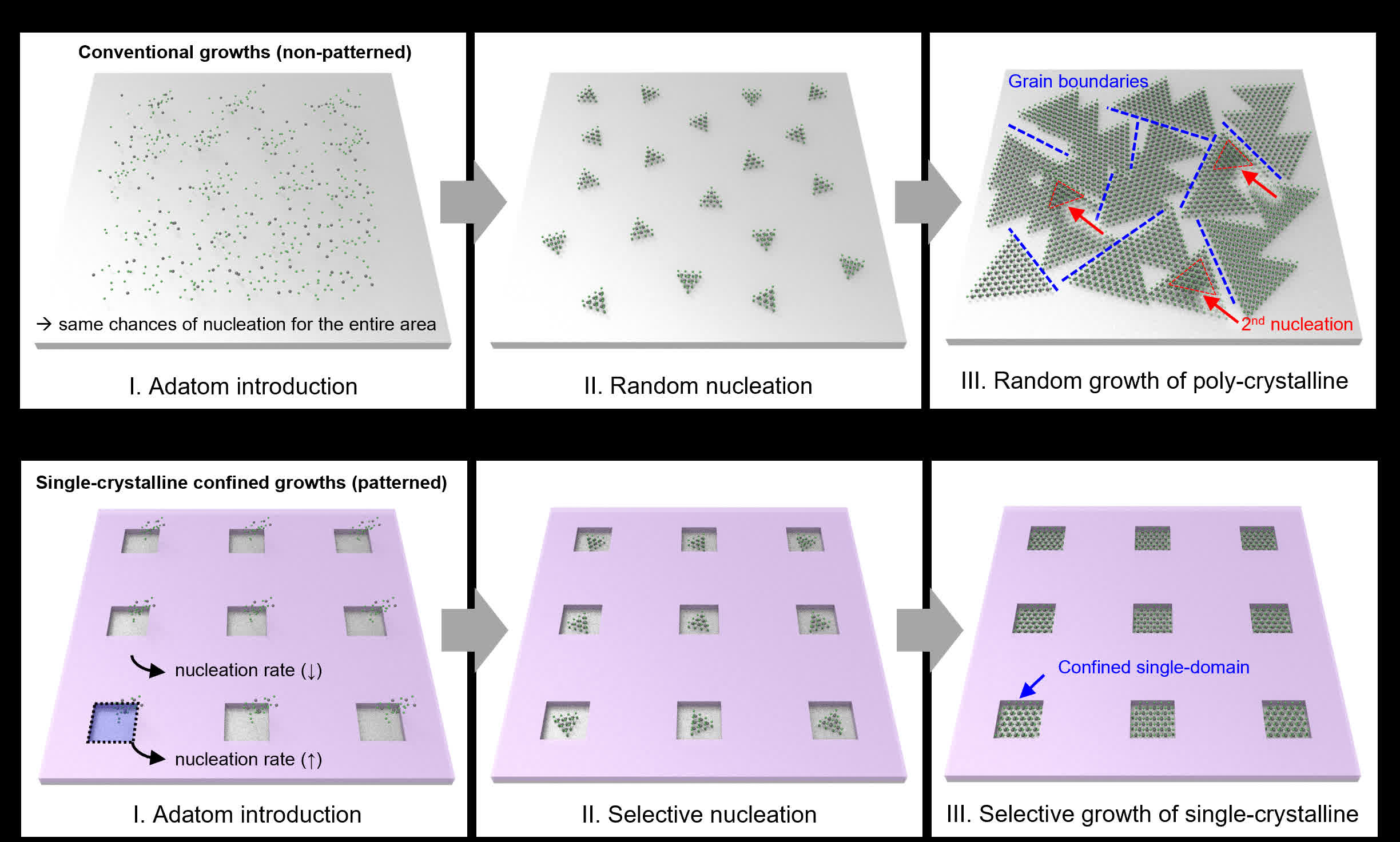Looking to the future: An international group of scientists has published a study on a new way of growing 2D materials using a method that can bring 2D transistor-based electronics to market faster.
Moore’s law is not dead yet, and it may soon get a new lease of life thanks to groundbreaking research conducted by an international and multidisciplinary group of scientists. In search of new methods for developing 2D materials, researchers have apparently developed a “promising” growing process that could power next-generation electronics.
Intel and other technology companies are working hard to produce the first chip containing a trillion transistors, and they are all considering new materials and compounds with a thickness of one atom (i.e. “two-dimensional”) as a possible alternative to silicon for the production of these components. transistors.
Led by Sang-hoon Bae, associate professor of mechanical engineering and materials science at the McKelvey School of Engineering at Washington University in St. Louis, and two other researchers, the new work includes two technical breakthroughs that will make electronic devices “faster and more efficient.” less power.”

The study was published in the journal Nature, and it examines a growing method that can “overcome three extremely difficult problems to create new materials.” These problems include ensuring monocrystallinity at the plate scale, preventing uneven thickness during growth at the plate scale, vertical heterostructures at the plate scale.
While 3D materials used to produce traditional transistors go through a roughening and smoothing process to become a material with a flat surface, the researchers say 2D materials cannot, and therefore the end result is an uneven surface that “makes it difficult to get large sizes.” scale, high-quality homogeneous 2D material.”
By developing a new “structure with limited geometric dimensions that facilitates kinetic control of 2D materials,” scientists have apparently been able to solve “all the serious problems associated with the cultivation of high-quality 2D materials.” Another technical breakthrough is the demonstration of “single-domain heterojunction TMDS at the plate scale”. The researchers used various substrates and chemical compounds to limit the growth of the nuclei, using these substrates as a physical barrier that “prevented the formation of lateral epitaxy and forced vertical growth.”
According to Sang-Hoon Bae, the new limited growth method “can transfer all the great discoveries in the field of 2D materials physics to the level of commercialization, allowing the creation of single-domain layered heterojunctions at the plate scale.”
The new achievement will lay a solid foundation for the use of 2D materials in industrial environments, accelerating the creation of new production processes for 2D transistors. Bae said other researchers are already studying this new material in very small sizes ranging from tens to hundreds of micrometers.







